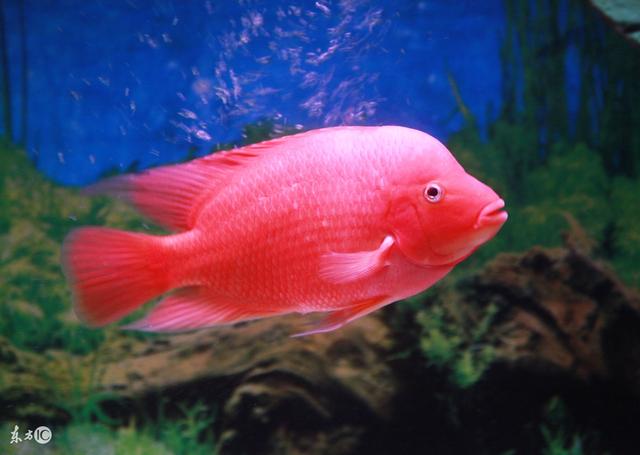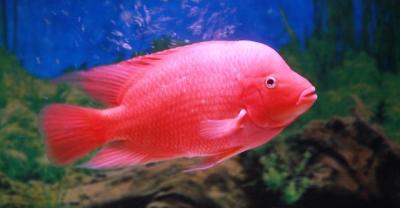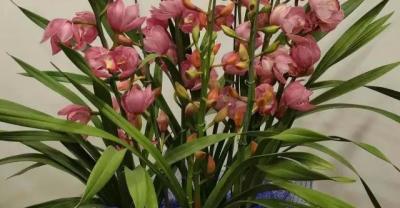Common Freshwater Ornamental Fish "Breeding Methods" Blood Parrot
Blood parrot family name: Sparidae
Alias: God of Wealth Fish, Wealth Fish
Morphological features:
The body length of the blood parrot is 25-35 cm. The young fish are gray # but as they grow up, they change from gray to white and then from white to pink # and finally to bright blood red. The body is oval and I is wider and thicker than # belly. There is a protruding sarcoma on the head. Dorsal fin, anal fin and caudal fin translucent # mouth like a parrot Parrot fish include purple parrot, macaque, Luohan parrot, red and white parrot, zebra parrot, flower parrot and so on. Living in the middle and lower layers of the water # mild temperament # lively and active # clumsy and naive # especially like the environment with plenty of sunlight

Key points of selection and purchase
The body is thick, round and short, the gills are not turned out, the body color is bright red, and the shape is convex and orderly, the mouth is triangular or T-shaped. The body is oval, with a broad and thick # belly. A sarcoma with a protuberance on the head. The dorsal, anal and caudal fins are translucent.
Types of food
Blood parrots are omnivorous # tend to eat animal food Weng also eat plant food and artificial food # red worms, harvest worms, water fleas, flakes, vegetable leaves and so on Medium fish eat a lot and gluttony will eat all the time. At this time, you can increase the feeding of bread worms, beef or shrimp, as well as fish color granules, Lamahong, Golden Red and so on.
In order to keep the color bright red # it is best to feed special bait frequently. However, the blood parrot is gluttonous and eats a large amount of food, which is based on 60% to 70% full.

Mixed culture index
The beak of the blood parrot cannot close its mouth, so it is low in aggressiveness. it can only impact each other and cannot bite. # can be mixed with golden pineapple, dark clouds, red pearl Guandao, pearl crater fish
Temple.
Parrot fish have a strong sense of territory # it is common to see them fighting among their own kind # increasing the number of breeding will reduce the phenomenon of fighting.
Feeding adaptability index
Easy to raise? it is suitable for beginners to raise fish. The newly bought blood parrot # can be put into a new tank soaked for 7 days and need to be stopped for 1-2 days. The blood parrot is timid # has the habit of digging sand # several fish are huddled in the corner to dig holes and hide inside. Because they have not adapted to the new environment, they will dislike each other, fight, etc. # at this time, they can feed their favorite water fleas, red worms or good-tasting and nutritious artificial bait.
Reproduction method
Blood parrot fish is easy to distinguish between male and female. The male fish is larger # the body color is red # the tip of the dorsal fin and anal fin is longer; the female fish is slightly smaller, the body color is lighter # and the abdomen is enlarged and fat.
As a hybrid fish, the blood parrot cannot form the embryonic development of the fertilized egg during reproduction because the chromosomes in the fertilized egg cannot be paired neatly # that is, it cannot hatch small fish.

Feeding method
Shall be equipped with a filtration circulatory system to increase dissolution in water
Oxygen.
The aquarium should be equipped with large water plants, pottery pots and submerged water to allow parrot fish to hide # with pink lights. Food coloring bait (add astaxanthin > # or feed shrimp. Otherwise, the body color of the blood parrot will become light red or even white.
The water temperature of 201MI321 can grow normally. Weakly acidic to weakly alkaline water can adapt to # hardness requirements are not too strict. Sensitive to temperature changes, the feeding water temperature is generally kept at 251-281, and the temperature difference of each change of water is not more than ±50 (.
It is suitable for living in acidic water quality and sufficient light environment. Attention should be paid to keeping the water quality when changing new water. You should change the fresh water of 1par 5 every day. Blood parrots need to maintain better water quality and provide sufficient oxygen than other fish.
Increasing light, strengthening filtration, thickening filter media and heating to 281 are all practical ways to maintain fish color.
- Prev

Breed selection should be paid attention to in mutton sheep breeding
Raise sheep and do a good job in breed breeding. Fecundity is hereditary, and different varieties have different fecundity. Produce two babies a year or three in two years, but most breeds have one child.
- Next

See what kind of plants are suitable for breeding in the bathroom?
Green plants are either on the balcony or in the living room. Have you ever thought of putting plants in the bathroom? Through plants to absorb, purify the smell, but also can add some green, yes.
Related
- On the eggshell is a badge full of pride. British Poultry Egg Market and Consumer observation
- British study: 72% of Britons are willing to buy native eggs raised by insects
- Guidelines for friendly egg production revised the increase of space in chicken sheds can not be forced to change feathers and lay eggs.
- Risk of delay in customs clearance Australia suspends lobster exports to China
- Pig semen-the Vector of virus Transmission (4)
- Pig semen-the Vector of virus Transmission (3)
- Five common causes of difficult control of classical swine fever in clinic and their countermeasures
- Foot-and-mouth disease is the most effective way to prevent it!
- PED is the number one killer of piglets and has to be guarded against in autumn and winter.
- What is "yellow fat pig"? Have you ever heard the pig collector talk about "yellow fat pig"?

